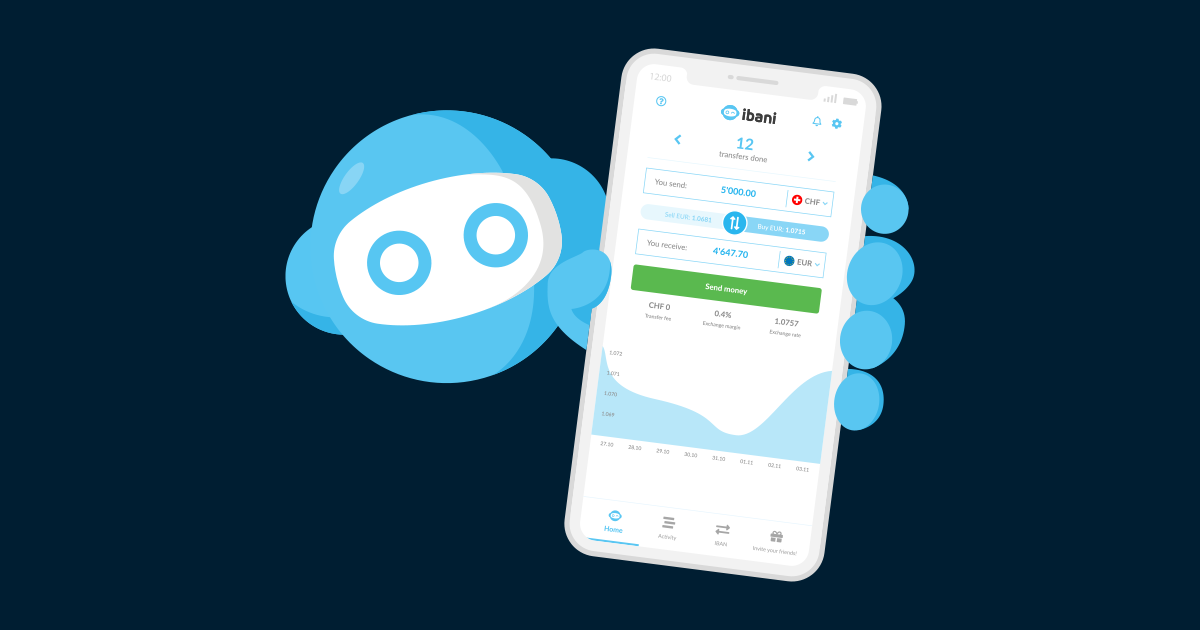
How to calculate an exchange rate?

Author: Quentin Arts

Author: Quentin Arts
An exchange rate is the ratio between two currencies, indicating how much of one currency you get in exchange for another. For example, if the CHF/EUR rate is 1.05, it means 1 Swiss franc is equal to 1.05 euros. This rate constantly changes based on market conditions (Forex).
Exchange rates fluctuate due to several factors, including supply and demand in the currency market, interest rates set by central banks, inflation, and the economic and political stability of the countries involved. For instance, if demand for a currency increases, its value tends to rise against other currencies. This is often the case with the Swiss franc, considered a safe haven currency.
The basic formula to calculate an exchange rate is straightforward:
Amount in Base Currency x Exchange Rate = Amount in Target Currency
In other words, you multiply the amount you want to convert by the applicable exchange rate.
Suppose you want to convert 100 euros into Swiss francs, and the EUR/CHF rate is 0.95. The calculation would be:
100 € x 0.95 = 95 Fr.
So, 100 euros will give you 95 Swiss francs.
To calculate a reverse exchange rate, simply divide 1 by the initial exchange rate. For example, if the EUR/CHF rate is 0.95, the CHF/EUR rate will be:
1 / 0.95 = 1.05
This means that 1 Swiss franc is equal to 1.05 euros. Then, to convert Swiss francs to euros, use this reverse formula. For instance, to convert 100 Swiss francs to euros:
100 Fr. x 1.05 = 105 €
Thus, 100 Swiss francs will give you 105 euros.
When converting currencies through a bank or exchange service, additional fees may be applied in the form of fixed or variable commissions. These fees reduce the final amount you receive. For example, if your bank charges a 1% commission on the converted amount, it will reduce the sum you get after conversion.
Let’s say you want to convert 1,000 Swiss francs into euros at an exchange rate of 1.05 (1 Fr. = 1.05€). Without fees, you should receive:
1,000 Fr. x 1.05 = 1,050 €
However, if your bank applies a 1% commission, the fee would be:
1,000 Fr. x 1% = 10 Fr.
These 10 Fr. in fees will be deducted from the converted amount, meaning you’ll convert only 990 Fr.. The final amount you receive in euros will then be:
990 Fr. x 1.05 = 1,039.50 €
Thus, instead of receiving 1,050 €, you’ll get 1,039.50 €, a loss of 10.50 € due to bank fees.
The real exchange rate, also known as the interbank rate, is what you see on financial platforms or Google. However, banks and exchange services often apply a markup to include their profit margins, usually between 1% and 3%. Therefore, it’s essential to compare the rates offered by different providers to minimize costs. For a comparison of exchange services, you can check our comparison of exchange services.
There are many online currency converters that allow you to calculate exchange rates in real-time. These tools are handy for getting a quick estimate of conversion. Among the popular options are free tools like Google’s: Google Converter.
For precise conversions with transparent margins, use the ibani rate calculator. It always shows the exact amount you will receive, with competitive margins ranging from 0.40% to 0.05%. Moreover, the exchange rates offered by ibani are up to 10 times better than those of banks. This level of transparency and these attractive rates make ibani one of the most reliable and appreciated options on the market.
Calculating an exchange rate is a useful skill for all your international transactions. By using a simple formula, considering fees, and choosing the right tools, you can maximize the value of your currency conversions. For hassle-free conversions, consider using services like ibani, which offer transparency and long-term savings.
The real exchange rate, or interbank rate, can be found on financial platforms or by using online currency converters. This is the rate used by large financial institutions to exchange currencies.
To get the best exchange rate, compare offers from different providers. Online services like ibani always offer better rates than traditional banks.
The official exchange rate can be found on central bank websites, trading platforms like Forex, or directly via Google. This rate reflects the current market rate without markup.
To minimize currency exchange fees, use services that offer rates close to the real market rate with low commissions, like ibani. Avoid converting at airport kiosks or banks that charge high margins.
The spread is the difference between the buy and sell price of a currency in the market. The interbank rate is the rate at which large banks lend currencies to each other, usually without additional fees. This rate is often considered the most accurate in the market.
Don't miss our next article on life and work in Switzerland and receive it directly in your inbox!
SubscribeOur FAQ gathers all the most frequently asked questions by our clients. Your question is probably answered there!
To the FAQIf you don't find the answer you're looking for, our team is available by email, on the phone (Monday to Friday), on Facebook, Instagram, or Twitter.
Back to Guides